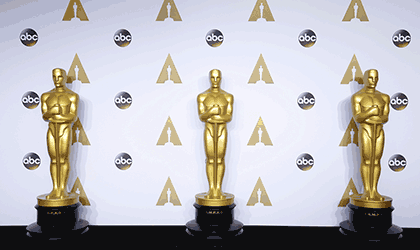
The answer is $3 million, according to an analysis by Edmund Helmer, a data analyst who maintains the blog BoxOfficeQuant. That is the average amount by which an Oscar win boosts a film’s takings, compared to other nominees. Perhaps surprisingly, though, a Golden Globe win actually provides an even bigger boost of $14.2 million, probably because of the earlier timing of the Golden Globe announcements, which gives distributors more chance to cash in.
Jeffrey Simonoff and Ilana Sparrow of New York University found that being nominated for an Oscar increased takings by 150% for films opening in 10 screens or fewer, and by 30% for those opening in more than 10 screens. However, the impact depends hugely on the timing of the film’s release in relation to the nomination announcement, and on how the distributor responds.
The science of sequels
If you were to look through the list of this year's Oscar nominees, you might notice the absence of sequels from any of the major awards categories. It would seem, therefore, that the Academy values originals more than follow-ups and follow-ons. Audiences, too, would seem to have a similar preference: sequels almost always make less money than the films that preceded them, and are judged less favourably.
Why, then, is Hollywood so obsessed with sequels? For a start, they are a much safer bet than a brand new idea that audiences might hate. That is why Warner Brothers has just embarked on a series of Harry Potter spin-offs, and why Disney brought Star Wars back to screens in 2015 for its seventh episode, followed by the spin-off movie Rogue One, with more instalments in the works.
A 2013 paper by Hou Yong and others from China’s Harbin Institute of Technology used linear regression analysis to reveal the link between the box office performance of sequels and their predecessors.1 The researchers studied a large sample of 371 films over a 32-year period. They concluded that the performance of the first film in a series has a bigger impact on the success of a sequel than whether the original was actually any good in the eyes of viewers or professional critics.
They also found that a franchise is only as good as its last instalment. In other words, if more than two films are made, it is the performance of the most recent episode that best predicts how the next one will fare. If the last instalment did badly, producers should consider pulling the plug.
While following in the wake of a hit does not offer complete protection against poor quality (Shrek the Third, for instance, had blockbuster pedigree but lacklustre reviews, and saw a 27% drop in attendance compared to Shrek 2), it does appear to be the more significant factor.
So for movie fans who are tired of studios churning out sequels, the message is clear: stop going to see them.
- This article is an excerpt from our February 2017 cover story. The full article is free to read for a limited period.
- Subscribe to Significance
Reference
- Hou, Y., Wang, T. and Li, X. (2013) How successful movies affect performance of sequels: Signal theory and brand extension theory in motion picture industry. In H. Lan (ed.), 2013 International Conference on Management Science and Engineering (pp. 798–806). Piscataway, NJ: IEEE. ^



